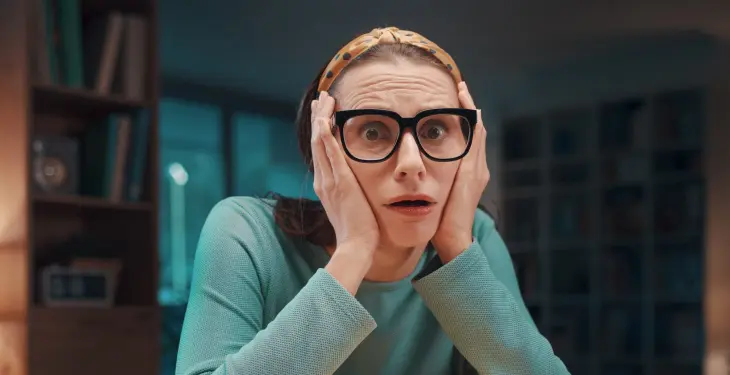

Written by Stephen Day
Gas Safe Engineer
Updated: 30th May, 2025
When you have a radiator not working, there is not always an immediately obvious way to fix the problem.
When your radiator(s) are not working properly, there is not always an immediately obvious way to fix the problem.
Get a free fixed price quote for a new boiler installed fast! - Find the perfect boiler!
Radiator problems can come in all shapes and sizes, some of which are a lot easier to fix than others, meaning that a lot of the hassle is just from identifying the cause in the first place, rather than the actual fix.
Understanding exactly what you are working with, and how to tell if a radiator is working correctly is vital, especially if you want to make sure that there are not serious problems with your central heating system.
The first thing you should always check is whether any of your radiators are leaking. Whether it is a valve issue or a damaged pipe, a leak can lower boiler pressure as well as draining some of the warm water out of the central heating system, which can leave your home with less efficient heating. Always check to see if there are leaks, as well as how severe these leaks are.
Get a quote in 60 seconds, fitted as fast as next day!
0% APR finance available.
There are two ways to fix leaks, depending on how serious the damage is. For minor cracks and bursts, you can usually patch them up with a strong cloth or something to wrap tightly around the break, which will hold for quite a long time.
More significant damage to the pipe system might need a professional gas-safe engineer, since the average person may struggle to find and fix the damage. Some leaks even need a pipe, radiator, or entire boiler to be removed and partially and/or fully replaced, so getting help from a professional heating engineer is always a good idea.
Anything that seals the leak will help keep the heat and water pressure high. Do not remove and replace a pipe unless you know what you are doing, we would highly recommend hiring a gas safe engineer to do this for you, and be sure to turn off the heating system before trying anything.
If a radiator is not working properly, make sure to check the top and bottom of the radiator to determine if the radiator is cold in one specific area. In most radiator designs, if a radiator is cold at the bottom, then something is blocking the pipes and preventing hot water from getting through properly: this can turn your radiator cold at the bottom.
If your radiator is cold, then the solution depends on what is blocking the system and where you notice the radiators are cold. If it feels cold at the top and bottom of the radiator, then the blockage might be in one of the pipes. If you find only part of the radiator cold, then the blockage is probably inside the radiator itself.
Air can be surprisingly difficult to work with in radiators. You can bleed extra air out of a radiator valve with a radiator key, which allows you to fix the problem yourself. This makes more room for hot water, and you can seal the valves again to prevent leaks.
Try to close valves properly, since an open valve allows water through it. You should ideally turn the boiler off before trying to remove radiator valves as a safety measure.
When you are trying to bleed a radiator valve, remember that radiators could hold water even if the boiler is turned off. With radiators, cold water can linger in the system after a blockage, so you may need to clean up spillages after you bleed a valve.
Watch out for a thermostatic radiator valve that has its own pin system, since this could mean that you need to alter the valves in a different way.
Finding instructions on the pin system may be the best way to get an idea of how they work, which can be important if you have not used the pin system before. Whether it is a key, pin, or something else entirely, outside help and guides can be very useful.
Trying to check for air issues is not easy, but you do not always have to check. If you try to bleed the air, that doubles as both a check and a solution, but won't cause any real harm if you try to bleed a radiator or do it without knowing that air is the problem.
Sometimes the problem is sludge formed from particles in the water building up in the radiator. This issue is a lot harder to fix since you will have to call a heating engineer if you want to do it correctly.
They have to use a professional pumping tool to force the sludge out of the system, which may take upwards of half a day depending on the number of radiators involved. A valve cannot be used for this, and trying to remove the valve could just clog it with sludge.
Unless you are a professional, do not try to work with sludge yourself. If the issue is in the boiler or pipes, always call a gas-safe registered professional, because working on a boiler yourself (especially if you are not a gas-safe engineer) can be incredibly dangerous.
You won't always be able to put the boiler back together correctly, too, which could damage it permanently.
Get a quote in 60 seconds, fitted as fast as next day!
0% APR finance available.
One radiator problem that many people overlook is a common thermostat problem. A cold radiator, or a radiator that keeps getting hot, may be because the heating system thermostats are not working properly on certain radiators.
On a cold radiator, you can usually take the cover off the thermostat, and the radiator will keep working just fine. You can adjust the knurled nut underneath the shell to tweak the heating that way, although you will usually want to turn the boiler off first. Be careful not to open any other nuts, since this may spray you with hot water.
If the thermostat is not moving, then it is seized or is stuck. This stops it from working correctly on that one radiator, and you will usually need professional assistance to fix it, so call somebody as soon as you can. Thermostatic radiator valves can also influence how the system works, as can other valve types.
See if the thermostat will turn normally to increase the heat. If not, you need to try and adjust it yourself until it allows warm or hot water through. Cold radiators that do not react to the thermostat are either damaged in some other way or do not have a functioning thermostat, so you will want to identify the problem using other methods mentioned in this article.
Whatever you do, do not get carried away and try to force the thermostat: if the top breaks open, the issue becomes worse, and you may have to completely replace that one radiator part.
Sometimes, you will notice radiators not working for other reasons. There are hundreds of individual faults that can happen, so sometimes you just have to look at your whole pipe layout and try to find the cause of the problem in your home central heating system.
If a radiator and boiler system do not have enough pressure, hot water may not get to all of the radiators. You may need a way to increase this pressure, and an engineer should be able to do that for you. Low pressure is sometimes something that you can fix yourself, but it helps to have the email address or phone number of a gas-safe registered engineer just in case.
If water is not leaving the boiler or is stuck still rather than flowing, there is not a proper supply of it. This could mean that a major water pipe - even one underneath your home - is damaged. Once again, you will generally need a professional to handle that for you.
As aforementioned, having the email address or phone number of somebody that can help will make it much easier to get the issue fixed in a timely manner.
Radiators and boiler units can gradually corrode over time. If you are not able to prevent it or repair the damage, you will eventually face a problem where you may need to replace entire radiators to get proper heat. Corrosion can cause leaks, introduce sludge into the pipes, and generally ruin your home heating system.
An older home that still uses older radiators and boiler designs can run into problems with their system not all fitting together properly.
Check for problems with an older radiator compared to a new radiator: cold water, clicking sounds, leaks, and so on. Over time, all radiators will break down, so very old radiators can need some extensive repairs or a quick replacement.
There is also the chance that some pipes are not meant to fit together, and have been jury-rigged by whoever installed them. Sharp corners and other risky methods that have been used to connect two parts of the system can cause hot water to wear down radiators and pipes much faster.
As odd as it sounds, sometimes cold radiators are just set to a cold temperature. New installations can sometimes be set to the very bottom of their heating range so that the customer can alter how warm they want the air, first: not all companies do this, but it is much more common than the radiator being set at the top of the range.
Check the heat settings or thermostats in case you find the easiest solution - the cold radiators being on a cold heat setting.
Get a quote in 60 seconds, fitted as fast as next day!
0% APR finance available.
Last updated: 30th May, 2025

Written by Stephen Day
Gas Safe Engineer at iHeat
Stephen Day is a Gas Safe registered and FGAS certified engineer with over 20 years of hands-on experience in the heating, cooling, and renewable energy industry, specialising in boiler installations, air conditioning, and heat pump systems.
LinkedInArticles by Stephen Day are reviewed by iHeat’s technical team to ensure accuracy and reliability.

27th November, 2025
A clear comparison of Worcester Bosch and Vaillant Boilers and why Worcester Bosch is ofte...
 Read Article
Read Article

27th November, 2025
Maintaining a boiler in good working order is essential for its efficiency and longevity....
 Read Article
Read Article

27th November, 2025
Most Hive heating issues come from lost connection, low batteries, receiver faults or boil...
 Read Article
Read Article
No obligation. Takes less than 60 seconds.